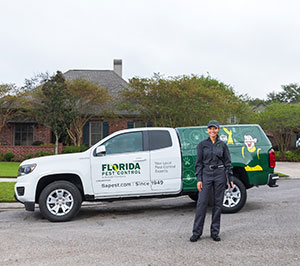A1 Bed Bug Exterminator Charlotte - Efficient and Budget Friendly Services
A1 Bed Bug Exterminator Charlotte - Efficient and Budget Friendly Services
Blog Article
Bed Pest Therapy Malfunction: Contrasting Chemical Vs. Non-Chemical Solutions
In the world of pest control, particularly when dealing with the relentless issue of bed insects, the selection between chemical and non-chemical treatment services can be an essential one. Both approaches supply unique benefits and disadvantages, affecting elements such as performance, security factors to consider, and overall cost. By checking out the nuanced information of each method, a more clear understanding of which path to pursue in addressing a bed bug invasion can be obtained.
Effectiveness of Chemical Therapies
Chemical therapies for bed pest problems have been commonly recognized for their fast and potent efficacy in removing these insects. When considering the efficiency of chemical therapies, it is essential to understand that they can give a thorough and quick solution to a bed insect issue.
Furthermore, chemical therapies have the advantage of offering recurring results, indicating that they can continue to get rid of bed pests also after the preliminary application. This residual activity is specifically valuable in combating any potential re-infestations. Additionally, the fast action of chemical treatments can bring alleviation to individuals facing severe bed pest infestations, allowing them to gain back control of their home swiftly.
Safety Worry About Chemical Solutions
One critical element that needs careful consideration when utilizing chemical services for bed pest treatment is making sure the safety of occupants and the environment. While chemical therapies can be efficient in removing bed insects, they might posture risks otherwise taken care of properly. Among the main security interest in chemical remedies is the potential harm they can cause to human health. Exposure to particular chemicals used in bed insect therapies can lead to respiratory system issues, skin irritation, or various other negative responses, particularly in people with pre-existing problems or level of sensitivities. Additionally, inappropriate application or dosage of chemical pesticides can lead to harmful deposits sticking around in the cured location, posing lasting wellness risks to occupants.
In addition, the ecological impact of chemical remedies is another substantial consideration. Some chemicals used in bed pest treatments may be unsafe to useful bugs, wild animals, and environments if they seep right into the soil or water supply. It is vital to make use of chemical treatments sensibly, following security standards, and taking into consideration much less poisonous options to reduce these risks and make certain the efficient and safe management of bed bug problems.
Benefits of Non-Chemical Approaches
Thinking about the possible safety and security concerns and ecological effect associated with chemical options for bed insect therapy, discovering non-chemical techniques presents an encouraging option with numerous distinctive benefits. Non-chemical treatments are environmentally pleasant, as they do not contribute to air or water air pollution, making them a sustainable selection for pest control.
In addition, non-chemical services can be efficient in targeting bed pests, consisting of hard-to-reach areas where chemical therapies might not permeate. Approaches such as warmth treatment, vacuuming, steam cleansing, and cushion encasements supply comprehensive elimination without making use of unsafe chemicals. Furthermore, non-chemical strategies can be much less disruptive, calling for marginal preparation and permitting quicker reentry into dealt with areas. On the whole, selecting non-chemical bed bug therapy techniques not only focuses on safety and security and environmental management but likewise makes sure effective and detailed pest control.
Limitations of Non-Chemical Treatments

In addition, non-chemical treatments often require several applications to accomplish effective elimination. This can be time-consuming and may not always ensure total removal of all bed pests and their eggs, particularly in hard-to-reach or covert areas.
Furthermore, the success of non-chemical treatments greatly relies upon correct execution and thoroughness, which can be challenging for people without professional proficiency. Poor application of non-chemical techniques might result in incomplete elimination, causing consistent infestations and the demand for extra therapies.
Consequently, while non-chemical treatments have their advantages, it is vital to recognize these constraints and consider them when determining one of the most efficient approach for managing bed insect infestations.
Cost Comparison: Chemical Vs. Non-Chemical Options
Offered the limitations associated with non-chemical treatments, a crucial facet to assess in the context of bed pest management is the price contrast between chemical and non-chemical alternatives. Chemical therapies commonly include the application of insecticides by specialists, which can vary from $250 to $900 per area, relying on the intensity of the infestation and the dimension of the location to be dealt with. On the other hand, non-chemical treatments like warm therapy or steam can be much more costly, with costs varying from $1,000 to $6,000 for a whole home. While the preliminary cost of chemical treatments might appear reduced, several therapies might be called for to totally get rid of the infestation, potentially increasing the total price. On the various other hand, non-chemical options may her explanation offer an extra lasting and environmentally friendly solution, although they can be cost-prohibitive for some people. Eventually, when considering the expense of bed bug treatment alternatives, it is essential to evaluate the ahead of time expenses versus the performance and lasting sustainability of the selected method.
Conclusion

Considering the possible safety and security worries and ecological influence connected with chemical remedies for bed insect treatment, discovering non-chemical approaches offers a promising option with several distinct benefits.Given the limitations connected with non-chemical therapies, a necessary facet to review in the context of bed pest administration is the expense contrast in between chemical and non-chemical options. In contrast, non-chemical treatments like warm therapy or vapor can be more costly, with prices ranging from $1,000 to $6,000 for an entire home. While the first price of chemical treatments may seem lower, several treatments might be required to totally remove the problem, potentially increasing the total expense.In conclusion, when contrasting chemical and non-chemical bed pest treatment choices, it is vital to consider efficiency, safety, advantages, limitations, and expense.
Report this page